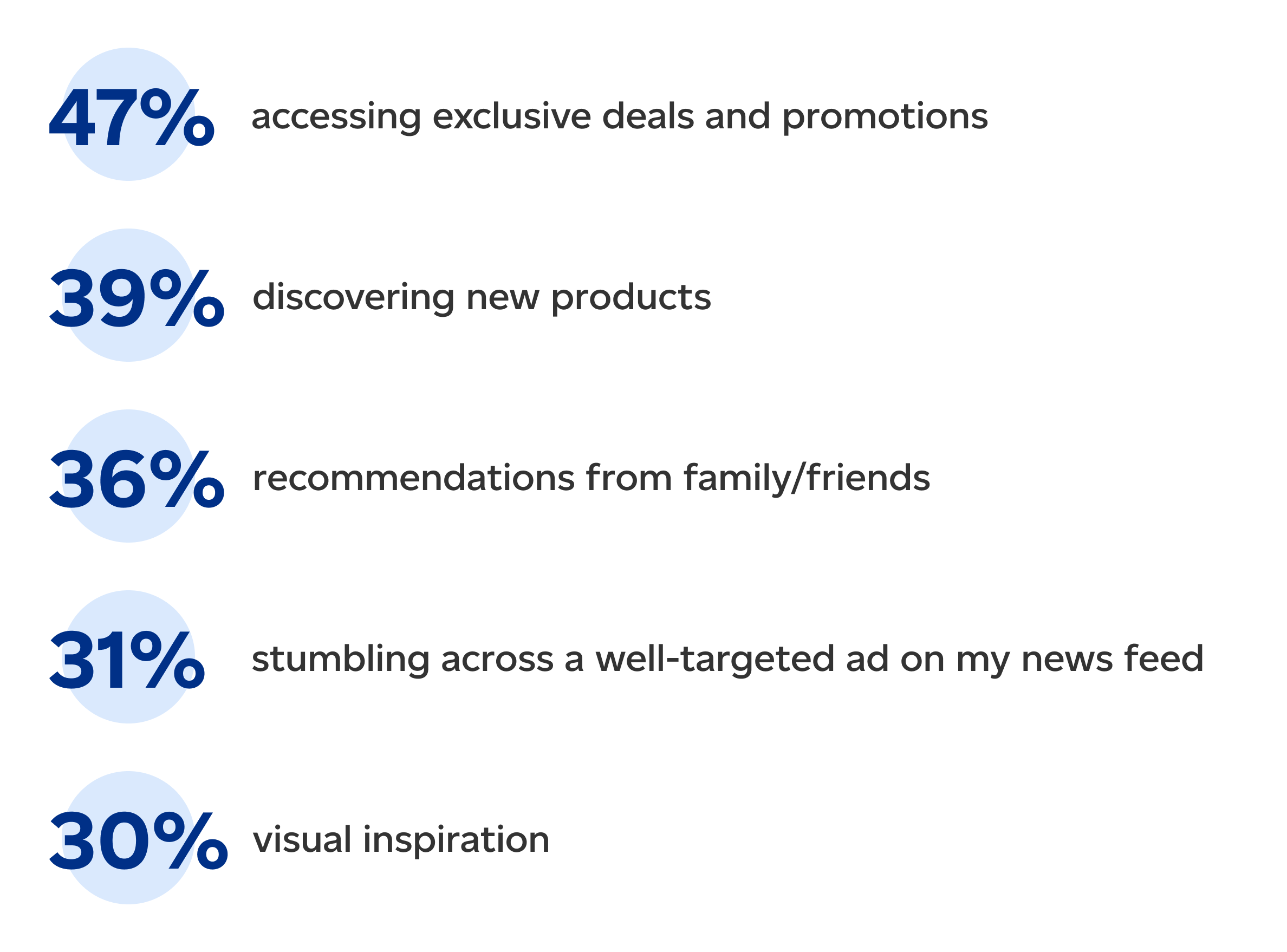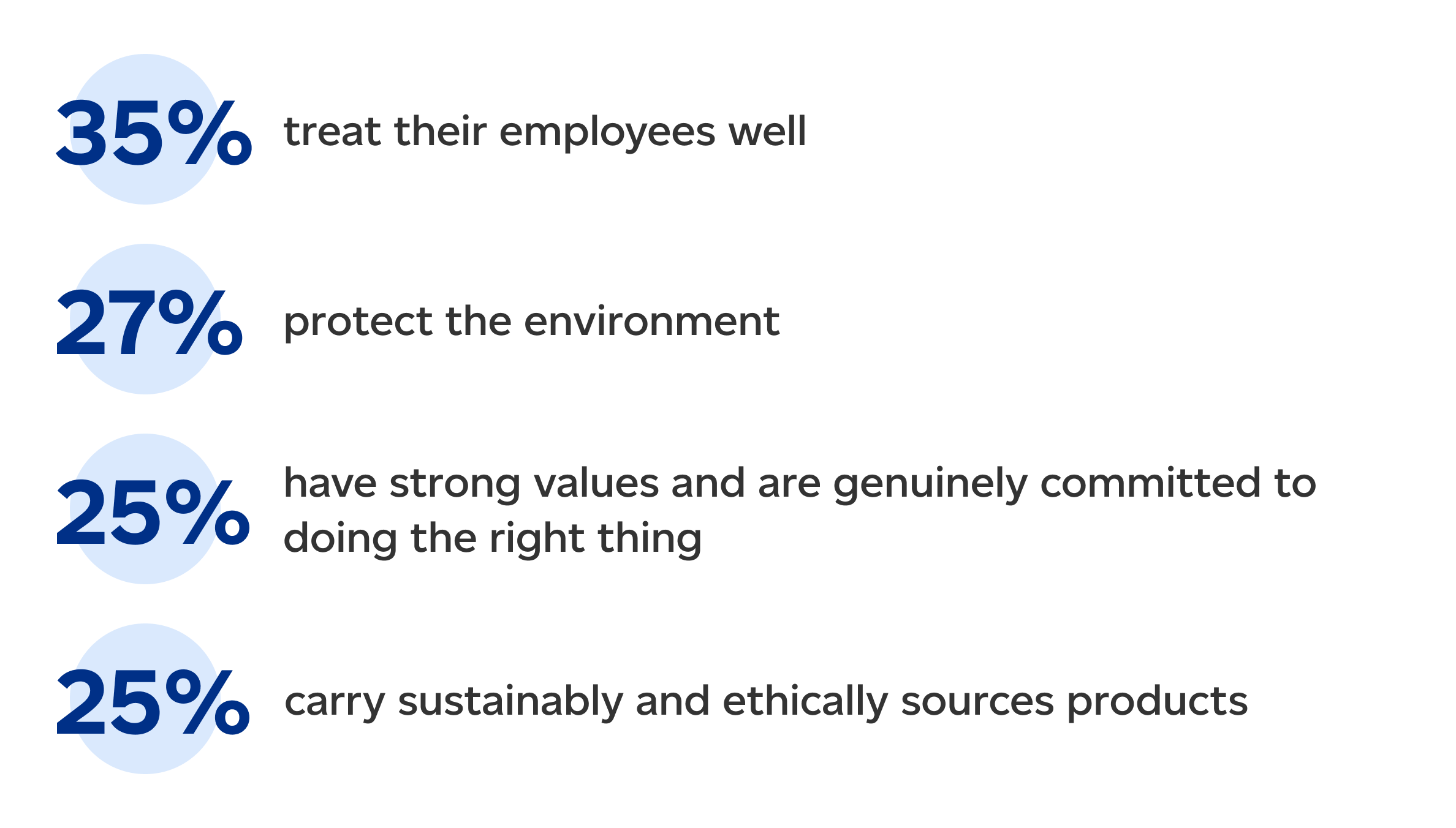Advances in technology, consumer spending shifts, interest rates, even a presidential election – the year ahead will hold plenty of surprises for you and your business. So, when it comes to your ecommerce strategy, a little certainty can go a long way.
As Canada’s national postal service, Canada Post has the insights you need to navigate the perceived complexities of shipping across the border and landing at your Canadian customers’ doors in 2024.
To help get your started, here are 7 ecommerce trends and tips to inspire your thinking, fuel your planning and keep your business one step ahead of the consumer – and your competition.
1. Omnichannel
Omnichannel presence is a necessary part of a retailer’s customer acquisition and retention efforts. If you want to bring customers in and encourage them to stay, businesses need to embrace multiple channels. Canadian shoppers are finding new brands through online and offline channels, with most noting that they discover brands via:1

Including an omnichannel strategy allows your business to tailor your approach to provide shoppers with a seamless and personalized shopping experience. As market demands and customer behaviour continue to evolve, brands will need to commit to omnichannel experiences like virtual shopping and livestream shopping while ensuring they are offering seamless and personalized experiences across channels.
Tip for 2024: Understand where Canadian shoppers are discovering new brands and purchasing products.
2. Social commerce
The shift towards social commerce represents a significant change in the way that consumers interact with brands. To be successful, brands will need to be ready to engage and sell in new ways.
Social commerce simplifies the shopping experience for consumers – especially millennials and Gen Z who are the primary audience participating in social commerce. It allows and facilitates transactions in-app, meaning that a shopper never has to visit an ecommerce website to place an order.
The top motivators that drive Canadian shoppers to purchase from a business through social media are:2

Brands are showing up with more organic, less promotional messaging and many brands are leaning on influencer marketing to expand their reach and build trust. Globally, social commerce is expected to generate more than CAN$2 trillion (US$1.48 trillion) by 2025.3
Tip for 2024: To drive your social commerce engine, ensure that your marketing strategy maximises your visibility across channels. Consider developing an influencer strategy, investing in social media advertising or engaging with other individuals and brands across social channels.
Sign up for our ecommerce newsletter for exclusive access to trends, insights and events.
Sign up3. Immersive experiences
Immersive technology offered through augmented reality (AR) and virtual reality (VR) will revolutionize the shopping experience for consumers. The use of immersive technology in ecommerce provides shoppers with a personalized experience that empowers them to feel confident in their online purchase – a barrier that is common among online shoppers.
Find inspiration in these best-in-class examples of online retailers investing in AR:
Tip for 2024: Harness the power of AR by providing shoppers with the opportunity to visualize a product in their environment ahead of purchasing to increase revenue, improve customer service and reduce returns volumes.
4. Sustainable options
Environmental sustainability continues to play an important role in purchasing decisions. Shoppers are looking for eco-friendly products and packaging and expect ecommerce brands to prioritize sustainability in how they do business. This includes greater focus on sustainable and eco-friendly return processes.4

Tip for 2024: Highlight the positive outcomes of your environmentally friendly practices such as waste reduction, decreased emissions and decarbonization, resource efficiency and preservation of biodiversity. Your customers want to hear about how your business is making a difference! Use your website, enewsletter and social channels to highlight your achievements and focuses.
5. Ethics and values
Beyond sustainability, consumers are seeking brands that share their values. Did you know 2 in 5 consumers strongly consider values-driven attributes in their decision making?5 These attributes may encompass a brand’s investment in diversity, social justice and inclusivity, to name a few.
When choosing where to shop online, consumers expect brands to:6

Tip for 2024: To gain valuable insights around your environmental, social and governance (ESG) investments it’s important that your brand keep a pulse on your customers’ values and how your message is perceived in market. Consider sending surveys or using data to understand how your current customers interact and engage with your brand to fuel strategies to acquire new customers.
6. Search and community
In 2024, brands will continue to invest in search engine marketing (SEM) and grow their community via social forums and platforms. Shoppers over the age of 55 are much more likely than younger demographics to learn about new brands through search engines (47%), while younger demographics discover through social networks like Instagram (40%), YouTube (38%), Tik Tok (32%) and influencers (28%).7
That means it’s important that brands are present – and engaged – across channels where your customers, existing and potential, are consuming content.
Brands capable of building community through forums, social media groups and interactive content, will create spaces for customers to connect, share experiences and become brand advocates. This will boost brand visibility and enhance customer trust and engagement.
Tip for 2024: As you consider marketing planning, ensure that you’re investing in tactics and platforms that make sense for your business.
7. Fraud protection and prevention
Shoppers continue to turn to ecommerce in record numbers, enabling fraudsters to execute fraudulent attacks against brands and consumers alike. As an ecommerce business crossing borders, it’s important that you protect yourself from hackers – and ensure that you’re investing in ways that let your customers know your business is legitimate.
Nearly two-thirds of Canadians are skeptical of new retailer websites due to possible fraud.8 As a U.S. retailer appealing to Canadians, your ecommerce site needs to look professional and include appropriate contact information. Ensure that your brand’s social channels are active and work with partners to prioritize delivery security.
Consider adding security to your site that discourages online bots and monitors orders for any oddities – especially during peak seasons.
Tip for 2024: Err on the side of caution when it comes to fraud. When in doubt, conduct a manual review. Don’t be afraid to contact a customer if there are questions related to an order – they will appreciate your caution and attention to detail.
Contact an ecommerce expert
Speak with an ecommerce expert at Canada Post to help grow your business.
Contact an expert